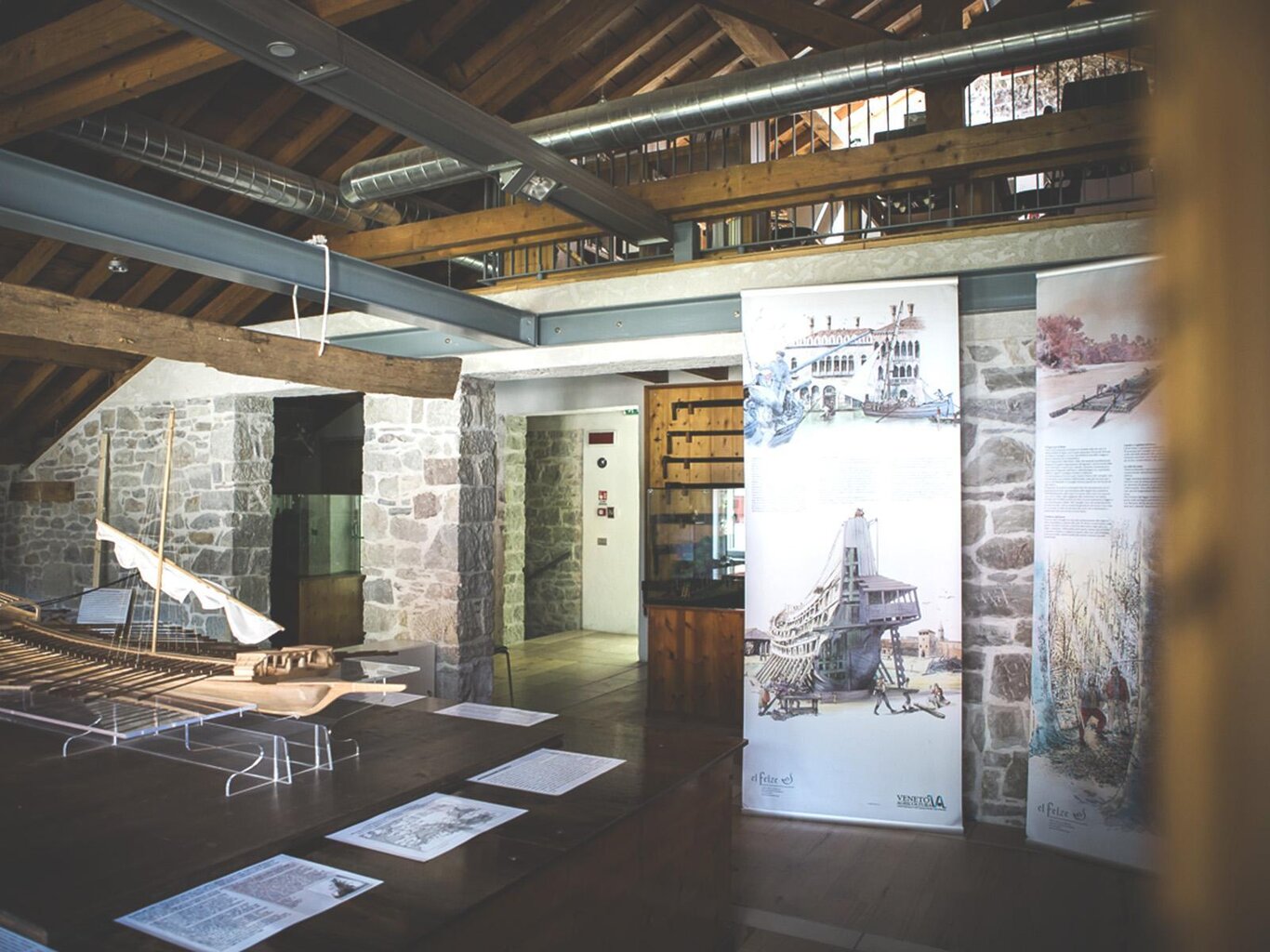Located within what used to be the elementary schools of the Cansiglio Forest, active until the 1960s, it was inaugurated on August 18, 1984, and is situated in Pian Osteria. Currently, the Museum spans two floors and offers a comprehensive overview of human presence in Cansiglio from Prehistory to the present day, highlighting how the current geographical and cultural layout is the result of a continuous and lasting interaction between ecological and anthropic factors.
The exhibition space is divided into several sections, which can be ideally visited following a chronological path that winds between the ground floor and the rooms on the first floor: in particular, part of the historical collection of documents relating to both Venetian domination and the presence of the ethnic-linguistic minority of the Cimbri can be visited, with panels and cards on forestry activities, carbonization, and livestock breeding.
Activities and sites of the presence of the prehistoric communities of nomadic hunters are also illustrated. One section is dedicated to paleobotany and the findings from Palughetto, which preserves the remains of the oldest conifers in Europe.
The Cansiglio is a pre-Alpine plateau between the provinces of Belluno, Treviso, and Pordenone. With its characteristic basin shape, it is a true hiking paradise due to its forest, which is the second largest in Italy. This territory is home to an ethnic settlement of Cimbri dating back to the early 1800s.
Of German origin, this population comes from Roana, one of the seven municipalities of the Vicentine plateau, which settled here due to the rich beech forests, a plant species suitable for artisan processing.
Currently, the villages of Campon and Pian Osteria are inhabited by the Cimbri, while traces of some typical buildings remain in Le Rotte, Vallorch, I Pich, Pian Canaie, Canaie, Pian dei Lovi, and Valbona. The historical building of Pian Osteria houses the ethnographic Museum and Cimbrian culture; it is open every day from June 15 to September 15 and can be visited by reservation during other times of the year. Among the sections, the first is dedicated to wood processing; the second is dedicated to the artisanal activities of the Cimbri; the third is dedicated to the library and the projection of videos on Cansiglio and Cimbrian culture, its history, and legends. Finally, good food: the restaurants of Cansiglio also offer traditional Cimbrian recipes passed down through generations.
For information, call 333 3513668 or email francescoazzalini@libero.it.
Free up to 14 years, disabled (L. 104/92) and companion;
€ 1 for children from 14 to 18 years and groups of children over 10 people;
€ 2 group adults with at least 10 people
€ 3 adults
Free entry on the first weekend of August on the occasion of the Festa di S.Osvaldo
